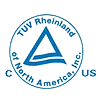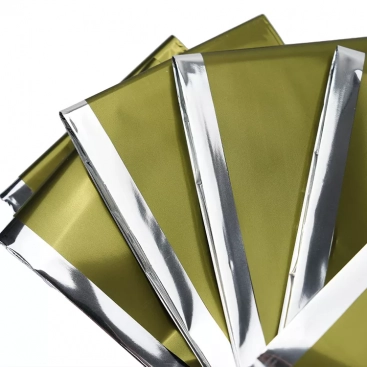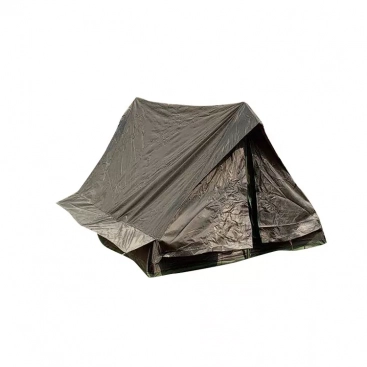Workplace safety has come a long way over the past century. In the early 20th century, construction workers and miners had little protection from falling objects and debris. Serious head injuries were common. According to the Bureau of Labor Statistics, nearly 1,000 workers per year suffered fatal head injuries in the workplace in the 1920s. This led to the development of what we now know as the hard hat.
Hard hats are ubiquitous at construction sites today. These iconic head protectors are a crucial piece of personal protective equipment (PPE) for millions of workers around the world. When worn properly, they prevent traumatic brain injuries and save lives.
At Yoo Shing, we have been manufacturing safety helmets for over 50 years. In this blog post, we will explore the evolution of protective headwear from early mining helmets to the advanced western hard hats and custom safety helmets we produce today.
The Invention of Hard Hats
The first hard hats were developed in the early 20th century by Edward Bullard, a San Francisco industrialist who owned a mining equipment company. After hearing reports of high numbers of head injuries in mines, Bullard created a protective headpiece made from steamed canvas, glue, and black paint. The resulting “Hard-Boiled Hat” was patented in 1919 and quickly caught on with miners seeking improved safety.
Other manufacturers soon produced their own protective helmets for miners, construction crews, and shipyard workers made from materials like cork, fiber, andfelt. These offered basic impact protection but were not optimal for workplace safety.
The Modern Hard Hat
In the 1930s, Bullard developed an improved model made from durable, shock-absorbing fiber and resin. The “Hard Hat” had a suspension system inside to provide a more secure fit. This iconic design formed the basis for the hard hat still used today.
Over the ensuing decades, additional features and materials were added to increase the protective capabilities. By the 1950s, most construction workers in the U.S. wore some form of hard hat, prompted by increasing safety regulations.
Hard hats then made from rigid thermoplastics like high-density polyethylene (HDPE) offered superior durability and resistance to chemicals, temperature extremes, and ultraviolet light exposure.
From Generic to Customized
Early hard hats offered basic protection but were uncomfortable to wear for long periods. They were hot in summer, cold in winter, and the suspensions often didn't fit correctly.
The manufacturers producing generic hard hats gradually realized that a customized approach was needed. Workers in different environments and industries required helmets designed for their specific needs.
This led to key innovations like slotted suspensions to improve ventilation, face shields, mounted ear protection and radios, sun visors, and integration with breathing apparatuses. Hard hats became more specialized through customization.
Safety Ratings & Certifications
Recognizing the life-saving role of hard hats, the American National Standards Institute (ANSI) and International Safety Equipment Association (ISEA) developed standards for performance and testing. This led to the ANSI Z89.1 standard established in 1969 for protective headwear.
To receive ANSI certification, hard hats must pass stringent tests for:
Impact resistance Withstand blows from falling objects.
Penetration resistance Prevent objects from piercing the shell.
Electrical insulation – Non-conductive shell to reduce electrical shock.
Flame resistance – Material won't burn.
Additional voluntary certifications like NIOSH and CSA provided further standards for work helmets. OSHA regulations then mandated the use of certified protective helmets on worksites to reduce injuries.
Hard Hat Classifications
Under ANSI standards, hard hats are classified into 4 types according to the level of protection and electrical resistance provided:
Type I (Class E) General use; offers impact protection.
Type II (Class E) – Adds penetration resistance for work with flying/falling objects.
Class G (Class C) Low voltage electrical protection (2,200 volts).
Class E (Class G) High voltage electrical protection (20,000 volts).
Most standard hard hats today provide Type I or Type II protection. But many industries and work environments require specialized helmets rated for electrical use or chemical exposure.
The Importance of Proper Fit
Hard hats can appear deceptively basic, but they are sophisticated pieces of PPE. A hard hat must properly fit the wearer to provide appropriate protection. Most allow adjustment of the suspension size but additional padding or replacement suspensions may be needed.
The shell should sit level on the head with a 1-1.5 inch clearance above the user’s head. Space between the shell and suspension system is needed for shock absorption. Straps must fit snugly under the chin to secure the hard hat in the event of an impact.
Workers who need prescription eyewear must ensure their hard hat can properly accommodate glasses or safety goggles. A poorly fitted hard hat is unsafe and can actually increase injury risk.
Choosing the Right Hard Hat
All certified hard hats meet the minimum requirements, but subtle differences exist between models and manufacturers. With so many choices available today, selecting the right hard hat is vital.
Important factors to consider include:
The work environment hazards like impact force, heat, cold, moisture, chemicals.
Electrical conductivity needs Will be around high/low voltage?
Integration with other PPE like earmuffs, masks, glasses.
Comfort and duration of wear All day or intermittent?
The most protective hard hat for a project engineer inspecting a construction site periodically may not be suitable for an ironworker working 12 hour shifts. Selecting helmets suited to each employee’s specific environment helps maximize safety.
The Yoo Shing Advantage
At Yoo Shing, we offer one of the industry’s widest selections of high quality fiberglass, HDPE, and lightweight ventilated hard hats. But we deliver more than just standard head protection.
Decades of experience producing hard hats allows us to provide customized and innovative solutions. We take a consultative approach to identify our clients’ needs before recommending purpose-built solutions.
Whether it is adding padding for comfort, integrating face shields to existing eyewear, or designing a hard hat from scratch for a unique application, Yoo Shing delivers.
Our in-house production capabilities and innovative engineering allow rapid prototyping and customization. And all Yoo Shing hard hats meet or exceed industry safety standards to ensure the highest levels of protection.
We also stand behind our products with extensive warranties, quick turnaround on replacement parts, and outstanding customer service. The durability and longevity of Yoo Shing hard hats makes them a wise investment for employers seeking to maximize worker safety.
Hard Hats for Modern Worksites
Since their introduction a century ago, hard hats have continually evolved to improve wearer safety. Advancements in materials, suspension systems, accessories and features have made modern hard hats the most protective ever produced.
Yoo Shing has been there through every step of this evolution. Our mission is to develop hard hats that meet the most rigorous safety standards while remaining comfortable during long wear cycles.
If you work in an industry that requires head protection equipment, insist on hard hats that are purpose-built for your environment. Don’t settle for an uncomfortable generic solution. Your safety is too important.
At Yoo Shing, we offer customized hard hat solutions for every application. Browse our extensive catalog or contact our team today to discuss how we can design the perfect hard hats to keep your workforce injury-free.














